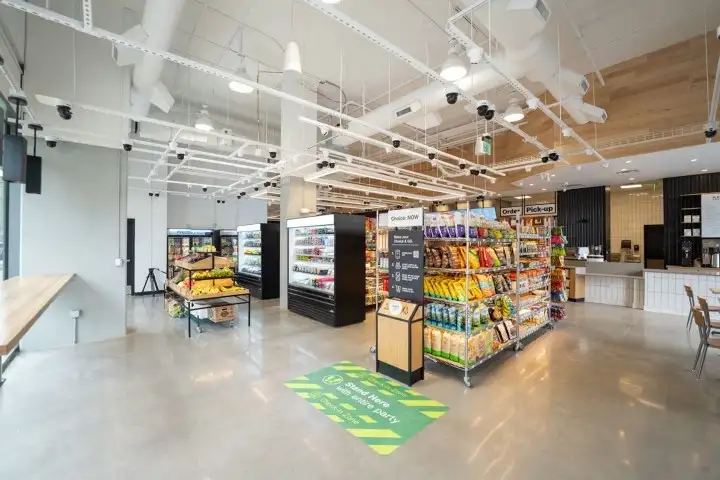
26 Oct - What Makes a Successful Autonomous Retail Store?
Many retailers are exploring the idea of opening autonomous retail stores. Some retailers take a slow, methodical approach by introducing self-check-out, while others have opted to embrace completely autonomous retail stores that have no customer-facing staff. The most successful of these stores, regardless of their chosen approach, share common traits. The following are the most common traits among these successful autonomous retail stores.
Why Are Retailers Exploring Autonomous Retail?
Customers Are Demanding Autonomous In-Store Experiences
As retail customers become more diverse, their preferences have evolved. The pandemic accelerated this change. Shoppers are demanding retail experiences that can deliver personalization and convenient shopping experiences. Autonomous retail can help businesses retain the flexibility to deliver both within the same retail environment.
In a recent survey, 75% of retail customers indicated their preference for autonomous shopping experiences in some capacity. Modern retailers have begun to react to this changing preference by modernizing their operations with technology.
Higher Operating Costs Have Encouraged Innovative Operational Models to Emerge
 Modern retail businesses must learn to operate in highly challenging and competitive environments. A widespread talent shortage and global inflation have increased operating costs significantly. To remain competitive in this challenging landscape, retailers must embrace digital solutions that can help them increase operational efficiency without excessive expenditure or disruptions to business activities. 88% of retailers have introduced digital transformation initiatives in some form. The industry’s acceptance of modern technology has made it necessary for retailers of all sizes to reevaluate the sustainability of their current operational models.
Modern retail businesses must learn to operate in highly challenging and competitive environments. A widespread talent shortage and global inflation have increased operating costs significantly. To remain competitive in this challenging landscape, retailers must embrace digital solutions that can help them increase operational efficiency without excessive expenditure or disruptions to business activities. 88% of retailers have introduced digital transformation initiatives in some form. The industry’s acceptance of modern technology has made it necessary for retailers of all sizes to reevaluate the sustainability of their current operational models.
Modern Stores Can Bridge the Gap Between Online and In-Store Experiences
Ecommerce stores have given customers an alternative shopping experience when they want convenience or variety. However, brick-and-mortar retail stores still remain popular. In recent years, omnichannel retail has brought together the benefits of both shopping experiences under single brands. The lines between online and offline shopping have blurred; customers are now more likely to opt for curbside pickup or look for reviews online before purchasing a high-ticket item in-store. Autonomous retail technology allows business leaders to consolidate critical operations and use customer data to better serve their customers.
What Do All Successful Autonomous Retail Stores Have in Common?
They Are Highly Efficient
Operational efficiency has always been important in retail settings but there are certain situations in which maximum efficiency is absolutely crucial. Time-conscious customers such as travelers or university students want retail experiences that allow them to purchase snacks, meals, or other essentials quickly. Stores that serve sports fans during an event must find ways to serve the maximum number of customers in limited time windows. Autonomous retail can help businesses serve large groups of customers with a limited number of employees at maximum efficiency.
They Engage the Customer
 Customer engagement can come in multiple forms, such as personalized recommendations, engaging interactions with in-store staff, or curated shopping experiences for each customer. These can be difficult to deliver in traditional retail settings. 95% of retail leaders say that their technology investments have improved customer experiences. This can be a result of freeing in-store staff from low-value tasks (such as manning checkout stations) and empowering them to engage more meaningfully with customers. Successful autonomous retail stores understand the levels of engagement their customers need and optimize their operations to deliver.
Customer engagement can come in multiple forms, such as personalized recommendations, engaging interactions with in-store staff, or curated shopping experiences for each customer. These can be difficult to deliver in traditional retail settings. 95% of retail leaders say that their technology investments have improved customer experiences. This can be a result of freeing in-store staff from low-value tasks (such as manning checkout stations) and empowering them to engage more meaningfully with customers. Successful autonomous retail stores understand the levels of engagement their customers need and optimize their operations to deliver.
They Deliver Customer Insight to the Retailer
Autonomous stores are perfectly positioned to collect and deliver insight to retailers so they can adjust their inventory or improve in-store experiences. This can help retailers optimize their supply chain operations and keep their stores highly efficient. However, shoppers demand that this information is handled in a way that keeps their privacy in mind. 65% of retail customers say that they prefer autonomous shopping experiences that are anonymous and private, which modern computer vision technology can deliver.
3 Tips for Successfully Operating an Autonomous Retail Store
1. Understand the Needs of Your Customers
Each customer base is unique and retailers must optimize their operations to meet the needs of their clientele. To do that, they must put systems in place that can help them collect and analyze important customer data. This includes sales and operational details that keep retailers informed of changing customer preferences and help them identify trends quickly.
2. Retain Flexibility and Agility to Change Depending on Customer Feedback
Customer preferences regularly change. This makes customer feedback an important component of a retail store’s operation. Customer feedback collected through in-store terminals or online feedback forms should be consolidated and analyzed to better understand shopper needs. Autonomous stores that use highly adaptable solutions are well placed to respond to these changes quickly.
3. Utilize Computer Vision to Reduce Overall Costs
Modernizing retail operations can be a costly endeavor for business leaders. Most retailers first experienced autonomous operating models through the use of smart fittings, shelves, and cameras. However, these models are often expensive, not scalable, and relatively rigid.
AiFi’s camera-only solution offers retailers a reasonably priced and highly scalable way to operate autonomously. With a collection of cameras and a highly sophisticated computer vision algorithm, retailers of any size can build and scale autonomous retail experiences. Computer vision also allows retailers to protect the privacy of their customers by using identifiers that are not tagged to a customer’s identity to recognize them as they shop in-store.
The retail industry is changing rapidly and the gap between e-commerce experiences and an in-store shopping experience is closing. Retail businesses that wish to operate in this omnichannel environment must evolve and use the available resources efficiently and effectively. Embracing the autonomous retail model does just that.
Find out how your retail business can benefit from deploying computer-vision-only autonomous retail systems on our How It Works page. If you found this article interesting, please share it on social media.





















